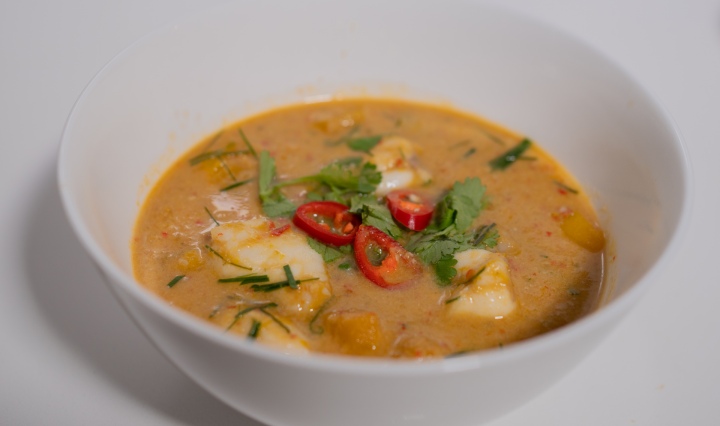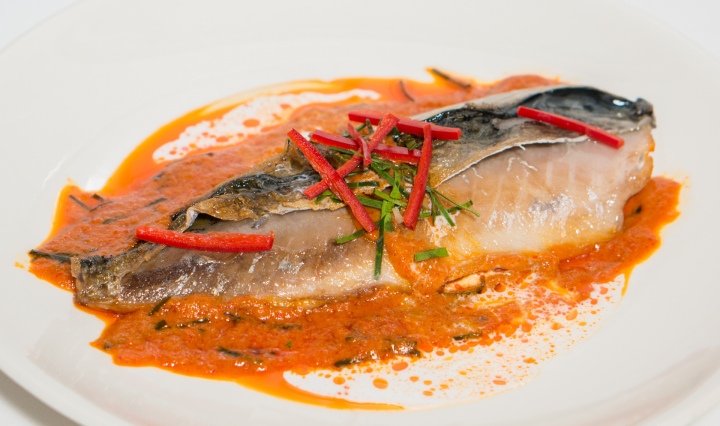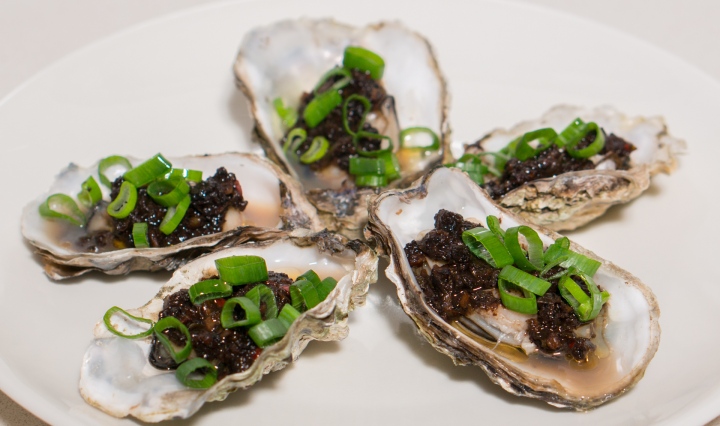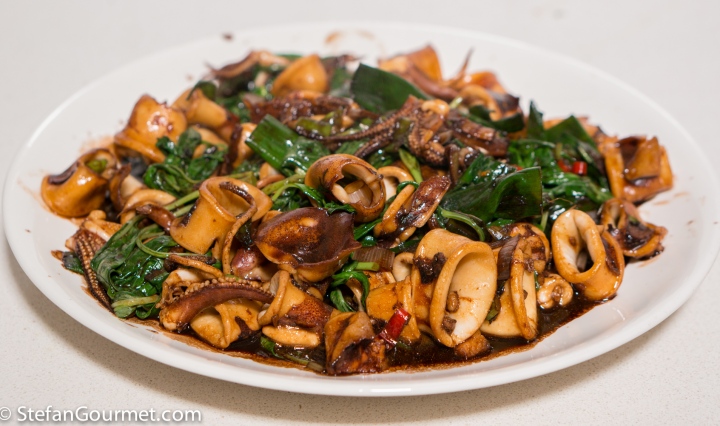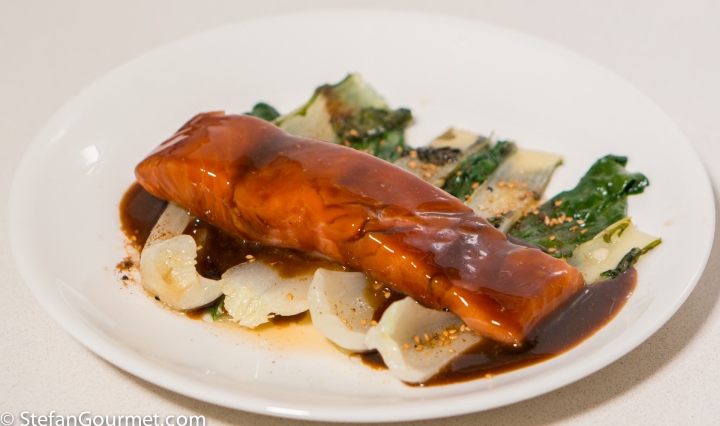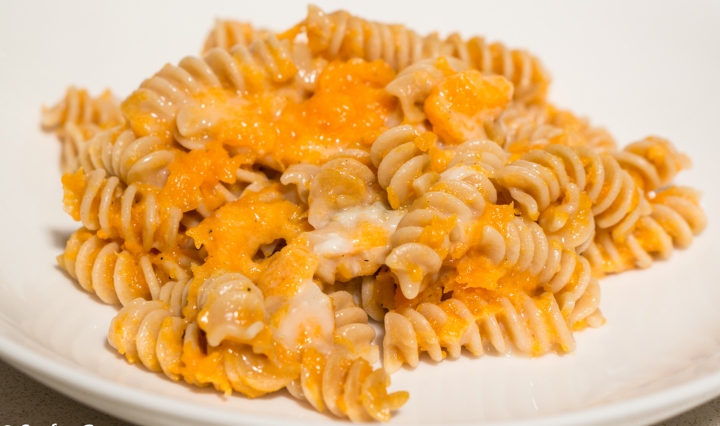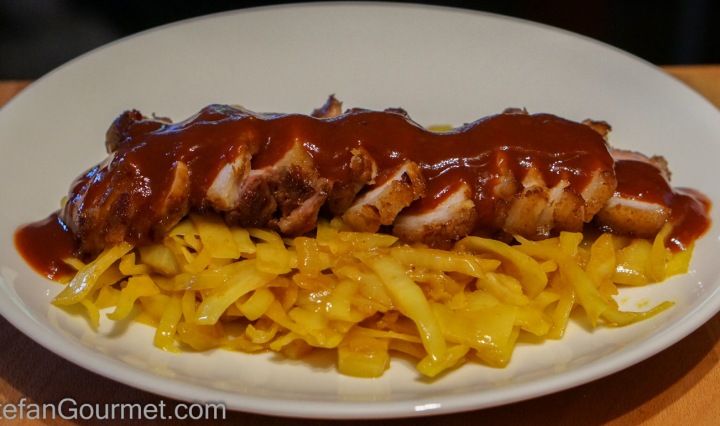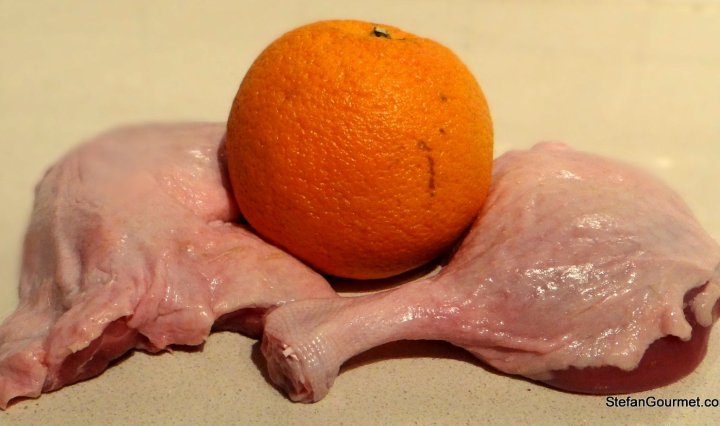Whoa! The more experience I have with cooking, the more I dare to experiment and try new things without using recipes. In this case I made up a recipe from scratch, and I am truly amazed how delicious it turned out to be. From Paul’s That Other Cooking Blog I got the inspiration to deep fry pork belly in cubes rather than as a roulade. And from blogging about Dutch nasi with atjar I got to think about Indonesian cooking. Now this recipe is not Indonesian and not authentic, but it is certainly inspired by Indonesian cooking and uses Indonesian ingredients. Don’t worry though if you can’t get Indonesian ingredients, as I’m sure that it will be just as delicious with substitute ingredients that I will provide.
This dish is bursting with flavor. It starts with pork belly cubes cooked sous-vide for 36 hours at 60C/140F with 5-spice. (You can also prepare this without a sous-vide cooker, though.) (I have since then discovered that pork belly is even better when cooked sous-vide for 36-48 hours at 57C/135F instead.) The pork is then deep fried briefly to crisp it up. The juices from the pork belly are used to create a darkly flavored sweet & sour sauce that is bursting with flavor from sambal oelek, fresh ginger, and caramelized onions. This sauce pairs well with the juicy tender pork belly. As a contrast to the deep dark flavors of the sauce, I prepared atjar-inspired spicy sweet & sour cauliflower that is equally bursting with flavor, but in a different fresher way. Served with some rice, this was one great meal! I will definitely make this again, and I won’t change a thing. Continue reading “Spicy Sweet & Sour Pork Belly and Cauliflower”

